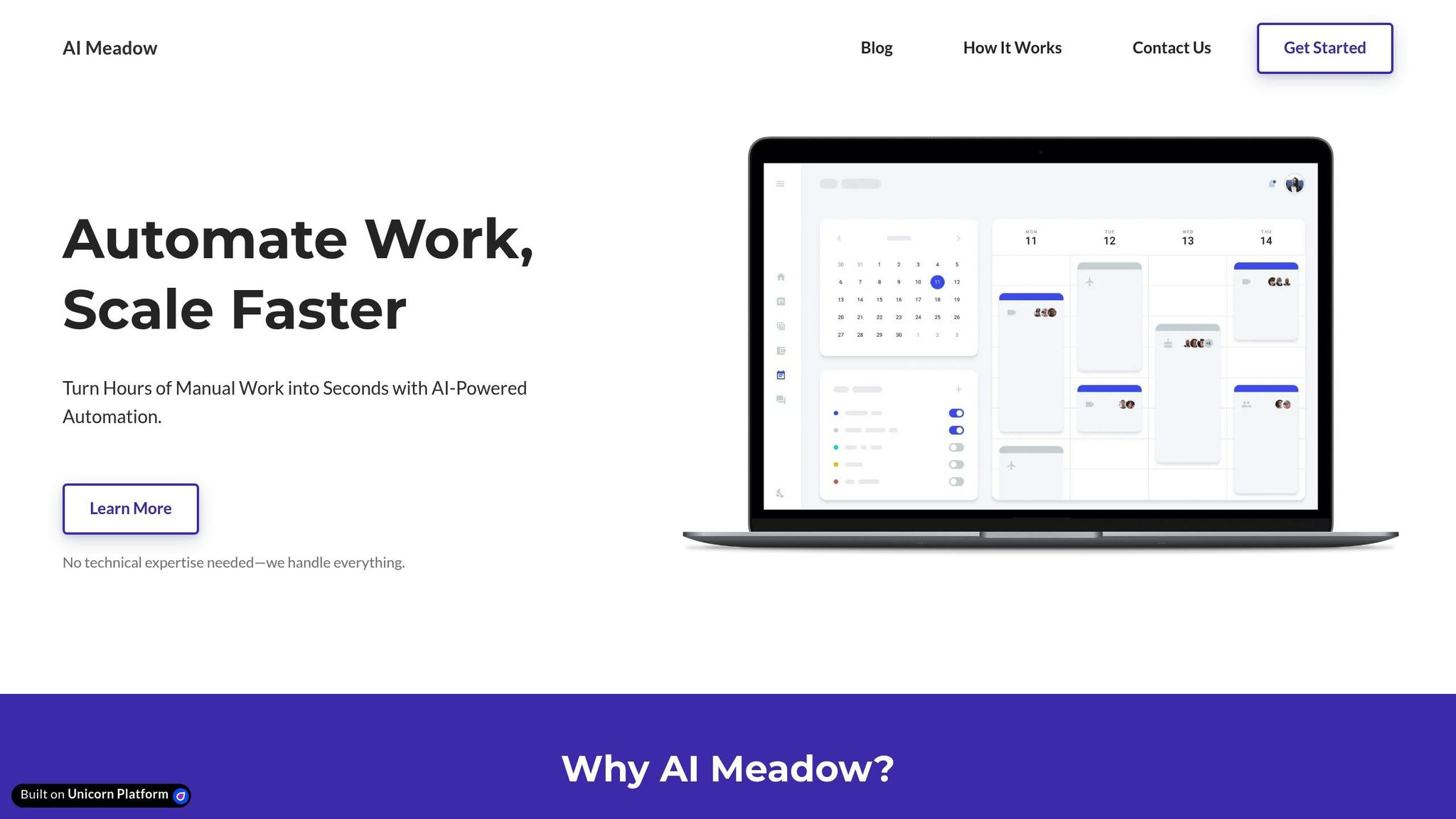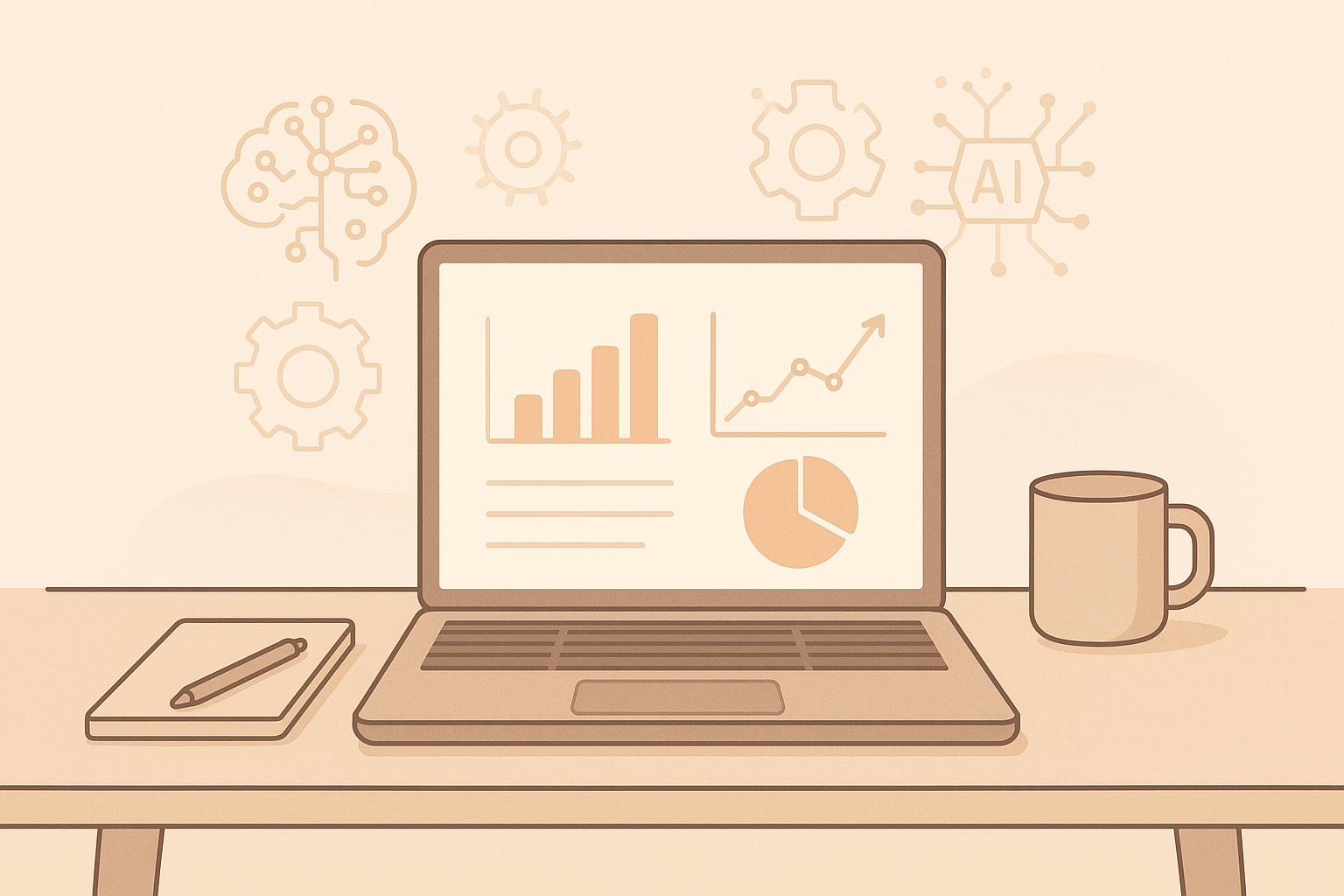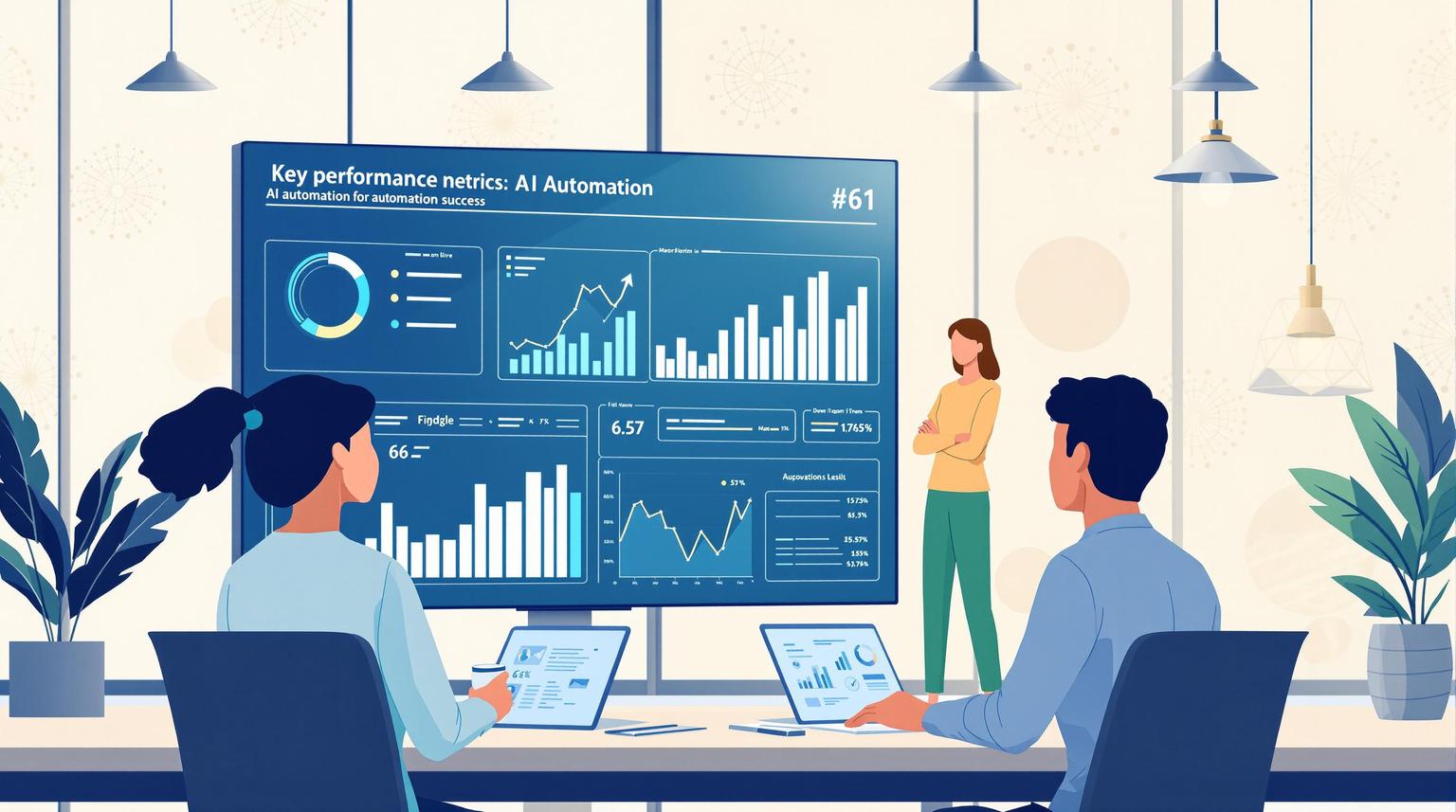AI can save small businesses time, reduce costs, and improve efficiency compared to manual processes. Here's why many small businesses are switching to AI:
- Time Savings: AI reduces time spent on repetitive tasks like data entry and error correction. For example, AI-powered tools can process data 35% faster than manual methods.
- Cost Efficiency: While initial AI setup costs range from $5,000 to $20,000 for ready-made solutions, it saves on recurring labor costs and improves accuracy, cutting error rates by 50%.
- Improved Accuracy: AI minimizes human errors, especially in tasks like financial reporting or customer service, leading to better decision-making and customer satisfaction.
- Scalability: AI handles workload spikes without needing additional staff, making it ideal for growing businesses.
- Proven ROI: Businesses using AI report benefits like a 20% reduction in maintenance costs, 30% productivity boosts, and up to 5X return on investment.
Quick Comparison
| Criteria | AI Automation | Manual Processes |
|---|---|---|
| Setup Cost | $5,000–$20,000 (ready-made) | $25,000–$40,000 (hiring, training) |
| Recurring Costs | $5,000–$15,000/year | Higher labor costs |
| Time Efficiency | 35% faster | Slower, prone to delays |
| Error Rates | Reduced by 50% | Higher error rates |
| Scalability | Scales easily | Requires more staff |
| ROI Potential | Up to 5X | Limited |
Bottom Line: AI offers faster, more accurate, and cost-effective solutions, making it a smart choice for small businesses looking to grow and compete effectively.
Related video from YouTube
Comparing Costs: AI vs Manual Work
Let's break down the costs of AI and manual processes by looking at setup, recurring expenses, and hidden costs.
Setup and Starting Costs
The initial costs for manual work come from hiring, training, and equipment, while AI setup costs depend on the type of solution you choose:
| Solution Type | Initial Cost Range | Cost Factors |
|---|---|---|
| Ready-made AI | $5,000–$20,000 | Software licenses, basic setup, training |
| Custom AI Development | $50,000–$150,000 | Development, testing, infrastructure |
| Basic Manual Setup | $25,000–$40,000 | Hiring, training, equipment |
Ready-made AI solutions are the most affordable option, starting at around $5,000. On the other hand, custom AI development requires a much larger upfront investment but offers more flexibility. Once setup costs are clear, it's time to consider recurring expenses, which play a big role in overall ROI.
Monthly and Yearly Expenses
Recurring costs reveal more differences between AI and manual workflows. For instance, a case study by RNA Automation found that annual labor costs for four operators working two shifts totaled $200,000. By automating parts of the process, the company reduced staffing to two operators per shift, cutting labor expenses to $100,000 annually, plus $16,400 for system depreciation.
AI solutions have their own recurring costs, such as:
- Software subscriptions: $29–$99/month
- Usage-based fees: $0.01 per API call
- System maintenance: Starting at $5,000/year
- Infrastructure updates: $1,000–$10,000/year
These ongoing expenses add another layer to your cost analysis, alongside less obvious hidden costs and benefits.
Unexpected Costs and Benefits
Hidden costs and unexpected benefits can also impact your ROI. According to a recent survey, 28% of businesses expect to save over $5,000 annually through AI and automation.
"Being a small business owner means I wear a lot of hats, so every minute and every dollar counts. I use AI when I'm looking for new ideas on how to describe a flavor profile for our sauces, or when I'm in a hurry to get a newsletter generated and don't have time to write my own copy. I love how it gives me fresh ideas when I feel stuck, and it helps me formulate my thoughts and execute them much quicker than I could on my own. I'd say AI has helped cut my work time in half on average." – Mary Ginder, co-owner of Gindo's Spice of Life
However, hidden costs like data security measures and ongoing staff training can add up. On the flip side, AI can save time: 33% of businesses report cutting over 40 minutes weekly on marketing tasks.
With global AI investment hitting $154 billion in 2023, it's clear that the technology is becoming a strong option for businesses. Understanding these cost factors is key to calculating ROI and making informed decisions about adopting AI.
Speed and Growth Potential
Speed and Task Completion
AI workflow automation saves a lot of time compared to manual processes in many business areas. A recent study found that less experienced employees can complete tasks 35% faster with AI, cutting down task times significantly.
This speed advantage is especially clear in data-intensive tasks. Take medical billing, for example: AI systems can process patient information and claims in a fraction of the time it takes to do it manually - hours or even days. These time savings aren't limited to healthcare. They apply to areas like data entry, financial reporting, customer support, and document processing. By speeding up these tasks, businesses can unlock more operational efficiency.
Accuracy Comparison
AI doesn't just work faster - it also works more accurately. Automated systems reduce error rates by 50% compared to manual methods. For example, finance departments using AI automation report far fewer errors because of AI's consistent precision.
Real-world examples back this up. PathAI, a healthcare tech company, uses AI to help pathologists analyze tissue samples with greater accuracy. This not only reduces diagnostic errors but also speeds up the analysis process.
Handling Business Growth
AI shines when businesses face rapid growth. Unlike manual processes that often require hiring more staff to keep up, AI scales effortlessly. This is particularly useful in areas like customer service. For instance, e-commerce companies can rely on AI to handle spikes in order processing without needing to hire extra workers.
McKinsey research highlights that automation could increase global productivity growth by 0.8–1.4% annually. This is because AI can handle larger workloads, adjust to changing needs in real time, keep performance steady during busy periods, and scale without major cost increases. A great example is Generali, a global insurance provider that uses automation software to improve efficiency across its operations. Businesses that adopt AI-driven automation report productivity boosts of up to 30%, which directly translates to better ROI, especially for small businesses.
sbb-itb-ca9a050
Business Results and Growth
Customer Service Quality
AI-powered customer service is transforming how businesses manage efficiency and customer satisfaction. Unlike manual methods, which typically assess only 2–5% of customer interactions, AI-driven quality assurance can evaluate 100% of interactions. This comprehensive analysis helps identify issues faster and improves training programs.
The results are hard to ignore. Companies using AI report a 50% reduction in response times and a 40% boost in customer satisfaction. For instance, a leading financial services firm achieved over 90% accuracy in key quality metrics after adopting AI for quality assurance. This shift enhanced customer experience by 5 percentage points while cutting contact center costs by 25–30% through better agent performance. These advancements allow businesses to make smarter, data-informed decisions.
Using Data for Decisions
AI analytics go beyond customer service, revolutionizing how businesses make decisions. Small businesses, in particular, benefit from AI's ability to process data in real time, offering actionable insights that manual methods simply can't match. This shift is critical, with 79% of corporate strategists now viewing AI as essential for planning and execution.
| Capability | AI-Powered Analysis | Manual Analysis |
|---|---|---|
| Data Processing Speed | Real-time insights | Days or weeks |
| Analysis Scope | Multiple data sources at once | Limited by human capacity |
| Pattern Recognition | Continuous monitoring | Infrequent and selective |
| Prediction Accuracy | Based on extensive data sets | Limited by small sample sizes |
Market Position Benefits
AI also strengthens market positioning, especially for small businesses. Companies adopting AI gain a competitive edge, leveraging efficiency and accuracy improvements. Ninety-one percent of SMBs report revenue growth with AI, and 87% say it helps scale operations more efficiently. This is particularly evident in strategies like cross-selling and upselling - Amazon, for example, credits 35% of its revenue to AI-driven recommendations.
"AI is leveling the playing field between SMBs and larger enterprises. Small and medium-sized businesses using AI see real returns across their operations, from improved efficiency to stronger customer relationships. Those who wait too long to invest risk falling behind as early adopters build their advantage." - Kris Billmaier, EVP, Salesforce
The data backs this up: SMBs experiencing growth are twice as likely to have an integrated tech stack (66%) compared to businesses with declining revenue (32%). Since 2016, AI adoption has surged by 415%, underlining its growing importance in staying competitive.
Small Business Success Stories
These examples highlight how AI can deliver better returns compared to manual processes.
AI Meadow Results

AI Meadow helps professional service firms improve their operations with tailored automation solutions. For instance, Meadow AI, a marketing platform, teamed up with EasyStaff to handle international freelancer payments. This partnership utilized 75% of market payment options while adhering to regulatory guidelines.
"Managing payroll and HR in-house is a strenuous practice for our startup. That's why we were looking for a solution like EasyStaff that would let us focus on core business by lifting the weight of paperwork off of our shoulders. Their experience in international finance and contractor management allows the platform to solve all our payment requests securely and effectively - more effectively than if we took it upon ourselves."
These practical examples show how AI can bring measurable improvements to business performance.
Key Performance Numbers
Pro Partners Wealth, a firm specializing in accounting and wealth management, experienced significant gains after adopting AI automation:
| Metric | Before AI | After AI | Improvement |
|---|---|---|---|
| Data Entry Accuracy | 80% | >95% | +15% |
| Processing Rate | Manual | >80% automated | Highly Automated |
| Time Savings | Baseline | 40% reduction | 40% |
Similarly, OpenTable benefited from Y Meadows AI, gaining clear operational advantages.
"We save hundreds of hours every month with Y Meadows"
Quick vs Long-Term Results
AI adoption offers both immediate and ongoing benefits. For example, PayPal reduced losses by 11% through better risk management and, between 2019 and 2022, nearly halved its loss rate while doubling its payment volumes.
"Y Meadows handles our routine work. It is key to our scaling strategy"
For professional service firms, the return on investment grows over time. Early gains in accuracy help cut error correction costs, while automation frees up teams to focus on higher-value tasks. The American College of Radiology, for instance, reported a 451% ROI over five years with AI platforms, which increased to 791% when factoring in professional time savings. These results directly enhance profitability and operational efficiency.
Making Your Decision
Main Points Review
When comparing AI automation to manual processes, several metrics highlight its advantages. For instance, McKinsey reports that businesses using AI see an average 20% cost reduction. Manual invoice processing costs $10.18 per invoice, compared to just $2.56 with AI automation. Beyond cost savings, AI increases productivity by 30% and cuts error rates from 20% to under 1%.
However, it's important to weigh these benefits against the costs of implementation:
| Business Size | Initial AI Investment | Annual Operating Costs |
|---|---|---|
| Small Business | $5,000 - $20,000 | $5,000 - $15,000 |
| Mid-Market | $50,000 - $250,000 | $15,000 - $45,000 |
The data clearly demonstrates how AI can improve cost efficiency, speed, and scalability. According to a study by Sybill, 92.1% of businesses reported measurable results from their AI investments in 2022. These findings provide a solid foundation for evaluating whether AI is the right move for your business.
AI Assessment Steps
To determine if AI is a good fit for your operations, consider these steps:
- Evaluate Current Operations: Look for tasks that are labor-intensive and could benefit from automation. For example, IBM found that virtual agents save an average of $5.50 per contained conversation.
- Calculate Total Costs: Include all expenses, such as software, hardware, implementation, and maintenance. Cost remains a key concern, with 60% of small businesses citing it as a barrier.
- Estimate Potential Returns: Look at both short-term and long-term gains. Companies that actively refine their AI systems report a 13% ROI, compared to the average of 5.9%.
"AI adoption is more than a tech upgrade - it's a strategy for transformation." - SEI Team
- Start Small, Then Scale: Begin with pilot projects in low-risk areas. For example, Wonolo used this approach to improve agent efficiency and reduce handle times by 20%. Expand gradually based on success.
When implementing AI, consider both technical requirements and the impact on your team. Surveys show that 82% of small businesses using AI report improved operational efficiency, while 77% say it enhances their ability to compete with larger companies. A thoughtful, step-by-step approach ensures your investment leads to meaningful results and better performance.


